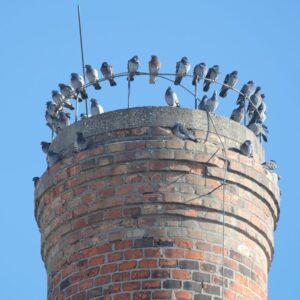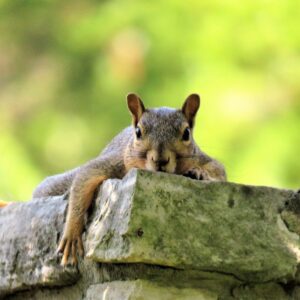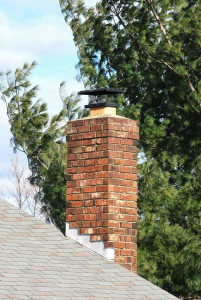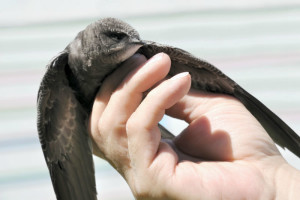URGENT!
Due to the weather, we are experiencing intermittent power outage and loss of internet. Please expect delays and or rescheduling of appointments during this time. We will reach out to you as soon as we can. Stay warm and stay safe!
A quiet evening at home is disrupted by scurrying, scratching, crying, or clawing sounds coming from the chimney. You have critters in the fireplace – but now what do you do?
Even animals that find their way into your chimney may not be able to get back out. Because of this, it is important to contact a wildlife rescue group or chimney sweep company experienced in safely removing animals as soon as possible.
Here at Lords Chimney, we can help. Call or book online with us now.
 From small squirrels to large raccoons, animals view chimneys as safe, protected areas to build nests and hide from predators. This means that animals will sometimes do whatever it takes to get into a chimney – even to the point of damaging the masonry or other chimney components.
From small squirrels to large raccoons, animals view chimneys as safe, protected areas to build nests and hide from predators. This means that animals will sometimes do whatever it takes to get into a chimney – even to the point of damaging the masonry or other chimney components.
One of the most common ways that critters get into your fireplace is by a damaged chimney cap. Even tiny holes and gaps in the mesh or wire sides may be big enough to allow a small bird or rodent to squeeze through. Likewise, larger animals such as raccoon have been known to worsen chimney damage in an effort to get into the fireplace.
Unfortunately, only raccoons are able to climb the slick walls of the chimney again and again – all other animals may quickly become stuck, trapped, or disoriented in the dark chimney flue once they get in. Trapped animals often sound frantic, scratching, clawing, and beating their wings against the flue in an effort to get out.
It is important to leave animal removal to the professionals no matter how big – or small – the critter in your chimney is. Some birds, such as chimneys swifts, are protected by law under the Migratory Bird Treaty Act and cannot be removed until after they have nested. An animal removal professional will identify the type of animal in the chimney and help safely remove the critters with minimal chimney damage.
If you have animal in your chimney it is important to leave the damper fully closed. Even partially opening the damper can create a space large enough for the animals to squeeze into your fireplace. This then gives them access to the rest of your home – trust us, a bird trapped in a chimney is much easier to remove than one flying around your living room!
Homeowners should also not “smoke out” any animals. Doing this can further disorient or even kill the animals in the chimney while potentially igniting nesting materials and other debris.
A well maintained and regularly inspected chimney is often the best line of defense against animal entry. Chimney sweeps can help identify any areas of damage or deterioration where animals could potentially get in. Likewise, if you’ve had animal entry in the past we can help identify the areas the critters are getting in.
Having animals in your chimney system can lead to many issues down the line. First and foremost, their nesting materials cause blockages, which then cause poor ventilation. When it comes to running a fireplace, good ventilation is a key component in ensuring everything functions as it should. Once blockages form, you’ll face smoke backing up into your home, as well as other fumes and toxins.
 Another problem occurs when animals find their way in, but can’t find their way out. This is an unfortunate circumstance that often leads to death of the creature. This then causes foul odors to creep into your home and can lead to pest infestation, as well. The best thing to do is prevent them from entering at all, so you can save yourself a bunch of hassle.
Another problem occurs when animals find their way in, but can’t find their way out. This is an unfortunate circumstance that often leads to death of the creature. This then causes foul odors to creep into your home and can lead to pest infestation, as well. The best thing to do is prevent them from entering at all, so you can save yourself a bunch of hassle.
The last thing we would like to point out is the inability to remove certain types of birds. Chimney swifts, for example, are endangered, meaning we are not legally allowed to remove them until they officially abandon their nests for good. If one sets up camp in your chimney, you are stuck with them – and your fireplace will be out of use until they are gone.
If nesting or any kind gets lodged inside of your flue or chimney, you could face serious dangers when it comes time to light a fire. First of all, these materials are fire hazards. If they ignite, you could find yourself facing a chimney fire. These events can also cause extensive damage throughout your structure, which will require time-consuming and costly repair work before you can light a fire again.
Excess build up can also clog up your system, meaning smoke and poisonous gases could easily work their way into your home. If smoke does not successfully exit your chimney, you will have a smoke-filled living space. This can cause your furniture, curtains, and carpet to stink. It can also lead to carbon monoxide exposure, which can be deadly. The risk of illness, house fires, and even death increase dramatically when you have clogs and obstructions in your chimney. So why put your family and home at risk? Call our team of experts today to put your mind at ease.
From squirrels to swifts, critters can cause significant damage to your chimney system. If you have animals in your chimney or have had problems with animal entry in the past, contact Lords Chimney today!
There a few big things we can do to get animals out of your chimney – then keep them out for good.
Call on our team – or book online today – so you are all set and ready to go when cooler fall temperatures come back around!
Animals love chimneys; whether it is raccoons or squirrels, roof rats or birds, many different types of animals view chimneys as a safe, protected space to nest, have their young, or hide from predators. Unfortunately, animal entry can cause serious damage to your chimney, as well as put you and your family at risk.
When an animal gets into your chimney, it can be harmful to them and damaging to your chimney. However, it is possible to avoid animal entry with regular chimney maintenance and a good chimney cap.
 How animals get in
How animals get inThe most common cause of animal entry into chimneys is a missing or damaged chimney cap. The chimney cap sits at the top of the flue, covering and protecting the flue from animals and the elements. While the solid metal top of the chimney cap prevents water from getting in, the mesh or wire sides serve two purposes: letting smoke out and preventing animals from getting in.
If they chimney cap is damaged in any way, it may be easier for animals to get in. Small holes, dents, damaged mesh, or missing screws might seem too minor, but even these small issues can leave spaces for animal entry. Birds and small mammals often only need a few inches of space to wiggle through, while raccoons have been known to claw or bite weak areas of chimney caps to create larger holes.
Even a tiny animal can create a big problem in your chimney. Below are some of the ways that animals can damage your chimney.
The best way to keep animals out of your chimney is by having a quality, well-fitted and correctly installed chimney cap. A quality chimney cap protects the area of your chimney that is most susceptible to animal entry, as well as keeps water and debris from entering your chimney. Regular chimney inspections can also be used to spot damage to the chimney cap or other areas of the chimney before animals can get in.
At Lords Chimney, we are the animal removal experts; not only can we safely get the animals out, but we can also prevent them from coming back with a quality chimney cap. Contact us today to learn more about how the chimney cap protects your fireplace system from animal entry.
With spring just around the corner, many animals will begin looking for places to build their nests and lay their eggs. Unfortunately, some birds may view your chimney as the perfect nesting place for their young ones.
One animal that is well known for trying to nest in chimneys is the chimney swift – it’s even in their name! While it may not seem like a major problem, a chimney swift nest in your chimney can be a serious nuisance as they are a protected species that cannot be moved. The following information about chimney swifts can help homeowners recognize these birds, understand how they get into chimneys, and find ways to keep them out.

Chimney swifts are very small grey and brown birds with cigar shaped bodies and wide, short bills. Chimney swifts are easily identified by their distinctive chirp as well as their sharp, jerky movements when flying. While chimney swifts spend their non-breeding winters in South America, they migrate back to North America for the spring nesting season each year. According to the Cornell Lab of Ornithology , “Their ability to travel over long distances and through a variety of habitats exposes them to a wide range of microorganisms.”
In year’s past, chimney swifts preferred to nest in hollow or dead trees. However, as cities have grown larger and wooded areas are harder to find, chimney swifts have been forced to adapt. In fact, chimney swifts got their name because they often seek out chimneys as their nesting sites.
Chimney swifts most commonly find their way into uncapped chimneys or chimneys with damaged chimney caps. Because they are so small, even the smallest hole in the netting or mesh of a chimney cap can be big enough for a tiny swift to fit through. Because they are a migratory bird that will return year after year to the same nesting site, it is important to have your chimney repaired as soon as the swifts have left to avoid their return.
When you first discover an animal has nested in your chimney, the natural reaction is to want them removed as soon as possible. Unfortunately, chimney swifts are a protected species whose nests cannot be moved.
Chimney swifts, along with a variety of other migratory birds, are protected by the Federal Migratory Bird Treaty Act. This law bans the removal or destruction of any migratory bird nests that have eggs or hatchlings. Thankfully for homeowners, chimney swifts have a short nesting cycle; in the span of about six weeks, the birds will nest, lay and hatch eggs, and have their hatchlings leave the nest.
While chimney swifts are a nuisance, they are a protected species that cannot be removed once they have built their nests. Because of this, they best way to keep them out is by preventative measures like spark arrestors or netting. For more information on chimney swifts and how to keep them out of your chimney this year, contact Lords Chimney today!